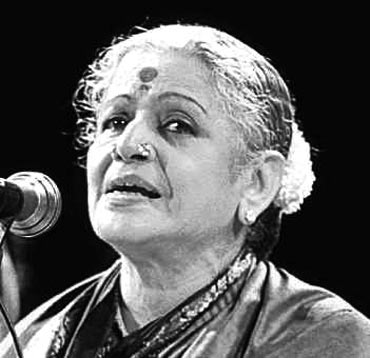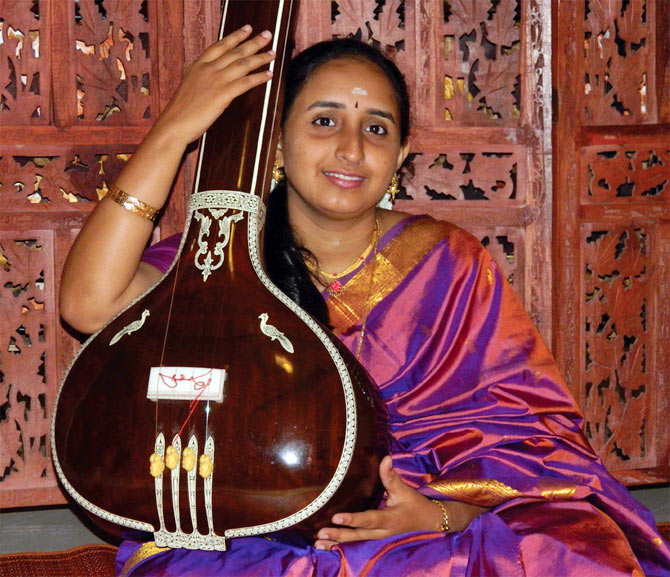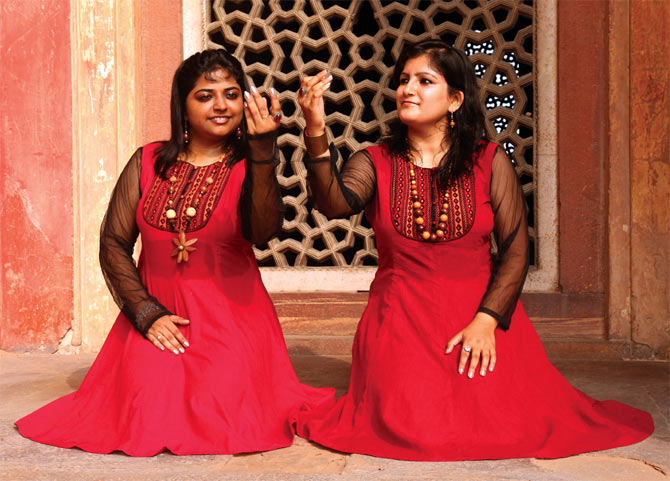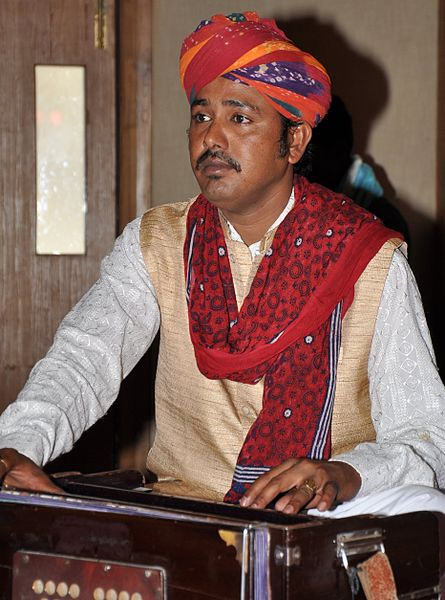Photographs: Sergio Perez/Reuters
Outside of the Bollywood dhinchak and the thumps of EDM, music in India has had an older and longer history whose traditions are being kept alive by many young musicians. We introduce you to some of them
If India were to be personified, its music would be the manifestation of its many quirks.
Think of every adjective that describes India and you would be describing its music too.
Here's a short checklist:
- Diverse -- yes, Indian music has many varieties
- Colourful -- definitely
- Accommodative -- you would be surprised
- Complex -- arithmetic plays an important role in music, did you know that before??
- Chaotic -- okay, No. One exception. Indian music is very structured, harmonious and melodious
- Filthy -- alright, another exception. Indian music can be uplifting, cathartic, inspiring and even life-changing simply with various strings of certain notes
- Indian music is said to have its origins in the Vedas, particularly Samaveda -- literally, 'knowledge of melody'.
It is a collection of hymns and verses, meant to be sung at various rituals.
However, the Samaveda is not the only parent of Indian music; there are several other texts that laid down the foundations of different musical styles, particularly classical music, and you will read about these in a little more detail in the following pages.
Indian music has multiple faces, and many of those faces are still alive and kicking, thanks to their dedicated preservation by artists in the country and abroad.
Traditionally, music in India is classical -- under the two umbrellas of Hindustani and Carnatic; religious -- as our music is tightly interwoven with religion, spirituality and piety; and folk -- which reflects the lives of local and regional communities and is steeped in folklore and the 'Indian way of life'.
It is fascinating that just seven notes, the fundamental blocks of music universally, are harnessed so differently and variedly around the world to form unique sounds in every country, nay, every community.
Within India itself, there exists much dissimilarity between musical styles, but somehow they are all still similar and still 'Indian', so to speak. Much like us Indians, wouldn't you say?
Courtesy:YouthIncMag.com

Please click NEXT to continue reading...
Hindustani Music: Sound for the soul
Image: Indian legendary sitar player Ravi Shankar and (right) Pandit Bhimsen JoshiPhotographs: Herwig Prammer/Reuters and Sahil Salvi/Rediff.com
Melodious, enchanting and mesmerising, Hindustani classical music has a unique influence on its listeners
Hindustani music, also called Shastriya Sangeet, is a sub-genre of Indian classical music that is associated with north India.
It has been heavily influenced by Persian and Sufi music, although it originated in the Vedic chants of ancient India.
Musical style
Melody is of paramount importance; thus, ragas form the melodic foundation of this genre.
There are many ways of singing in Hindustani, but the two major ones are dhrupad (an older, devotional style usually performed by male singers) and khayal (a fusion of dhrupad and Persian music; a more popular
style).
History
The Mughal empire and the cultural exchange that took place therein spawned Hindustani music.
With time, various gharanas (schools of music) emerged based on the dhrupad and khyal styles. As most arts in India, Hindustani music too was supported by kings.
Current scenario
With artists like Ravi Shankar, Hindustani music has gone global to such an extent that Indian classical music abroad is equated to Hindustani music. Even today, Hindustani instruments like the tabla and sitar are frequently used by international musicians.
Notable Hindustani musicians
- Allaudin Khan
- Bhimsen Joshi
- Ravi Shankar
- Pandit Jasraj
- Veena Sahasrabuddhe
- Ashwini Bhide Deshpande
Janhavi Phansalkar: The blossoming nightingale
Image: Janhavi PhansalkarPhotographs: Courtesy YouthIncMag
To understand more about why young musicians prefer Hindustani music, we spoke to classical vocalist Janhavi Phansalkar, who is trained under veteran vocalist Veena Sahasrabuddhe.
Janhavi Phansalkar is the recipient of the NCPA-CITI Scholarship for music and came second in All India Radio's National Music Competition this year.
Early beginnings
My parents are deeply interested in classical music and are avid listeners. My mother used to play the sitar. She was keen that I and my elder brother be trained in music too.
Why Hindustani music?
As a child, I was attracted to the aura surrounding great maestros like Pandit Bhimsen Joshi, Pandita Kishori Amonkar, etc. Classical music is the mother of all genres. It is the vastness, depth and all-inclusive nature of this genre that has attracted me.
My musical spirit guide
I idolise my gurus. I am extremely lucky to be groomed by broad-minded, liberal and self-made artists like Dr Usha Parkhi and Vidushi Veena Sahasrabuddhe. As for my guru Vidushi Veenatai, she is one of the strongest pillars of Hindustani music today.
My first big break
My concert at the Dadar Matunga Cultural Centre (in Mumbai) was my first major public performance. I was very fortunate that Pandit Sharad Sathe (revered, senior artist of the Gwalior Gharana) was present at the recital.
Cherry on top for my musical career
I feel that I owe something to the music fraternity. It is the duty of aspiring artists to preserve what the masters have created, add to it and pass it on.
If I am successful in contributing to this field in some small way, that will be the cherry on top!
Carnatic music: Magic for the mind
Image: M S SubbalakshmiPhotographs: Rediff Archives
Carnatic music is often seen as rigid, incomprehensible and somehow weird. Once you get to know it, though, you will realise it is a rich, complex and magical form of music
The classical music style is identified with the southern region of India.
Like its northern counterpart, Hindustani, it too evolved from the Hindu traditions of ancient India which is why the prominent theme here is religion as well.
Musical style
Important elements are shruti (pitch), swara (notes) which are combined in manifold ways to produce ragas (sets of notes for building melodies), and talam (time metre) which determines the defined number of beats in a song.
Emphasis is placed on technique, but melody is important too.
An artist who can bend and blend distinct notes in a song is considered masterful.
History
Silappadikaram, a Tamil epic by Ilango Adigal, laid down the rules of modern day Carnatic music. Kings of southern India encouraged both vocalists and instrumentalists.
Current scenario
Chennai is the seat of Carnatic music and is host to a prestigious annual Carnatic music festival held in December, which is increasingly seeing young people taking to the stage and wowing the audience with their skills.
Notable Carnatic musicians
- Tyagaraja, Muthuswami Dikshitar and Syama Shastri -- the Trinity of Carnatic music
- Purandaradasa
- Papanasam Sivan
- M S Subbalakshmi
- M L Vasanthakumari
Aishwarya Shankar: A star in the making
Image: Aishwarya ShankarPhotographs: Courtesy YouthIncMag
To understand what inspires young artistes to pursue Carnatic music, we spoke to classical vocalist Aishwarya Shankar from Tamil Nadu who has been performing on stages across the continent since the age of nine.
Shankar has been awarded a music scholarship by the Government of India, the People's Choice Carnatic Music Idol Award, and is a finalist in SPIC MACAY's all-India music competition, Naad Bhed.
Here, she talks about her first stage performance, her influence towards the classical music genre and more...
Early beginnings
I started learning Carnatic music from the age of four. I gave my first performance (a full-fledged concert) for three hours at Ilford in London at the age of nine.
Why Carnatic music?
Because I belong to a family with a musical background. Dad played the veena and mom also used to sing well. All other family members also took keen interest in music.
My musical spirit guide
My father Dr Krishna Shankar was my first spirit guide. At present, I am undergoing advanced training from ‘Sangeeta Kalacharya’ Suguna Varadachari in Chennai.
My first big break
After shifting base to Chennai for music, my first break was when I won the maximum number of prizes in the competitions conducted by leading sabhas (arts organisations) like Music Academy, Narada Gana Sabha, Mylapore Fine Arts Club, etc.
The cherry on top for my career
A doctorate degree in music as well as prestigious awards like Bharat Ratna, Sangeeta Kalanidhi, etc will be good for the icing. But cherry will be the day I successfully make a small but noticeable contribution to Indian classical music, enthralling audiences across the globe.
Sufi music: Melody for the soul
Image: A R RahmanPhotographs: Sanjay Sawant/Rediff.com
Devotional music comes in many styles and forms but Sufi music is a genre that has gained a huge following for its aesthetic beauty and emotional foundation
Sufi music is a form of devotional music which helps the devotee connect with their deity. It has various subgenres including qawwali, kafi, hamd, naat, manqabat and ghazal.
Musical style
Sufi music is derived from the poems of Sufi saints like Rumi, Hafiz, Bulleh Shah and Khwaja Ghulam Farid.
The songs usually set poetry and praise to God with melodies created by musical instruments.
Kafi is considered a classical sub-genre of Sufi music which utilises a table, a dholak, a harmonium and a vocalist.
History
Traditionally, Sufi music was reserved for performances during religious festivals and ceremonies but has gone on to be performed on a daily basis.
The dargah of a Sufi saint would usually form the location for Sufi musical performances.
Current scenario
Sufi music has achieved popularity over the last few years.
Although not traditional, Sufi rock emerged in the 1990s from a fusion of Sufi music and poetry with rock music.
Various Sufi musicians have gone on to perform in Indian films and reality television shows.
Notable Sufi musicians
- Amir Khusrow
- Abida Parveen
- Nusrat Fateh Ali Khan
- Rahet Fateh Ali Khan
- A R Rahman
- Warsi Brothers
- Wadali Brothers
Roohani Sisters: The musical devotees
Image: Neeta Pandey and Jagriti LuthraPhotographs: Courtesy YouthIncMag
Neeta Pandey and Jagriti Luthra have both attained a doctorate from the Faculty of Music and Fine Arts of Delhi University.
They are both accomplished Indian classical musicians who decided to pursue their love for Sufi music under the collective name Roohani Sisters
Early beginnings
Our journey as Sufi singers started four years ago when we were doing our master’s degree and research work in Indian classical music and Sufism. Since then, we have never looked back.
Why Sufi music?
The spiritual idea behind Sufism that sees no boundaries, the idea of loving the Murshid, Pir, Ali as much as yourself, and the philosophy behind the writings of great saints are what attracted and inspired us to work more in this genre.
Our musical spirit guide
Our parents and our gurus have always been a great support for us. We try to learn something from every other person we meet in our daily lives by seeing God in every human being. Nusrat Fateh Ali Khan saab has always inspired us and we sing his kalaams and qawwalis whenever we get an opportunity.
Our first big break
Whenever we are able to make a connection with the audience, we consider ourselves to be successful.
Cherry on top for our musical career
We want to spread the right message about Sufism. Through our music, we aim to bring peace and harmony to this world. When we achieve that, we will have attained the ultimate success.
Rajasthani Music: Melody for the senses
Image: Mame KhanPhotographs: Kannan shanmugam/Wikimedia Commons
One of the most celebrated folk music genres in India is Rajasthani with its energetic performances and multiple instruments in tandem.
Rajasthani folk music mostly focuses on the rustic desert life in the state of Rajasthan. Songs are composed about drawing water from the well, oncoming monsoons, the harvest season, etc.
Musical style
Rajasthani folk music is performed primarily by the descendants of musical families.
Each caste had its own style of performing and a different basis for the themes of their music.
For example, the Maand community would sing in honour of Rajput kings, the Bhopa community would sing epic tales of past heroes of Rajasthan and the Kamad community would sing in praise of a deity.
The two most prominent traditional music castes are the Langhas and the Manganiars. Both are considered to be descendants of Rajput communities that converted to Islam.
History
Folk music in Rajasthani was defined when the Rajput rulers encouraged the growth of culture and commissioned musicians to perform in their courts.
The music was initially sung in praise of the kings and their victories and gradually transcended into themes of everyday life.
Current scenario
Rajasthani folk music has gained fame with musicians infiltrating the Indian film industry.
International folk band Mumford & Sons collaborated with traditional Rajasthani folk group Dharohar Project in the recent past.
Many Rasjasthani folk musicians have made appearances in television shows and toured the world in music festivals.
Notable Rajasthani Musicians
- Allah Jilai Bai
- Aslam Khan Langha
- Kachra Khan
- Mame Khan
Aditya Bhasin: The cultural proponent
Image: Aditya BhasinPhotographs: Courtesy YouthIncMag
Aditya Bhasin and his folk group Rajasthan Roots have played in many music festivals, collaborated with artists on MTV’s Coke Studio and also appeared in the television show The Dewarists.
Early beginnings
It started eight years ago with a vision to take Rajasthani folk music all over the world because there is so much wealth in terms of culture in Rajasthan but a lot of people didn't know about it.
I wanted to take that music and fuse it with something appealing for everyone so Rajasthani folk music would be heard all over the world.
Why Rajasthani folk music?
I was very inspired when I came to Rajasthan. There is a perfect blend of different types of music: pop, traditional folk, Sufi, tribal. And there was a blend of religions and cultures in folk music with roots that stretch far and wide. It was the vast richness that attracted me most.
My musical spirit guide
The person who was my inspiration was John Singh. Along with his wife Faith Singh, he started the block print clothing brand Anokhi. They had a similar vision of taking Rajasthani culture to the rest of the world and I was very inspired by their work.
My first big break
I think our first live show was our big break. We played in a beautiful setup in the Garden of Five Senses and got good coverage in the media. Another show which is close to my heart is when we performed at The Ladakh Confluence because I think that made it acceptable for us to perform at mainstream music festivals all over the world.
Cherry on top for my musical career
Whether it is our band or any other, I believe the day a Rajasthani folk music group wins a Grammy will be the ultimate success for every Rajasthani musician.










Comment
article